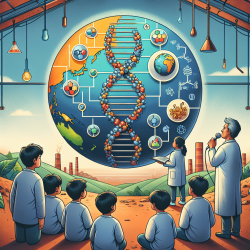Autism Spectrum Disorder (ASD) is a complex neurodevelopmental condition with increasing prevalence worldwide. Recent research has highlighted the potential role of environmental factors, such as heavy metals, and genetic interactions in influencing ASD. A study titled "Concentrations of Lead, Mercury, Arsenic, Cadmium, Manganese, and Aluminum in the Blood of Pakistani Children with and without Autism Spectrum Disorder and Their Associated Factors" provides valuable insights into these associations.
The Study's Findings
The research conducted in Karachi, Pakistan, involved 30 children with ASD and 30 typically developing controls. It assessed the blood concentrations of six heavy metals: lead (Pb), mercury (Hg), arsenic (As), cadmium (Cd), manganese (Mn), and aluminum (Al). The study also explored the interaction between these metals and three GST genes (GSTP1, GSTM1, GSTT1) known for their role in detoxifying environmental pollutants.
The findings revealed marginally significant differences in geometric mean blood concentrations of lead and aluminum between ASD cases and controls. The study also suggested potential interactions between GST genes and metal concentrations that could influence ASD status.
Implications for Practitioners
This study underscores the importance of considering both environmental exposures and genetic predispositions when assessing ASD. Practitioners can enhance their understanding of ASD by:
- Monitoring Environmental Exposures: Be aware of the potential impact of heavy metals on children with ASD. Regular monitoring can help identify at-risk individuals.
- Genetic Testing: Consider genetic testing for GST gene variants to better understand individual susceptibility to environmental toxins.
- Collaborative Research: Engage in collaborative research efforts to explore the complex interactions between genetics and environmental factors in ASD.
The Need for Further Research
The study highlights the need for larger-scale research to confirm these findings and explore additional genetic-environmental interactions. Such studies could provide deeper insights into the etiology of ASD and inform more effective interventions.










